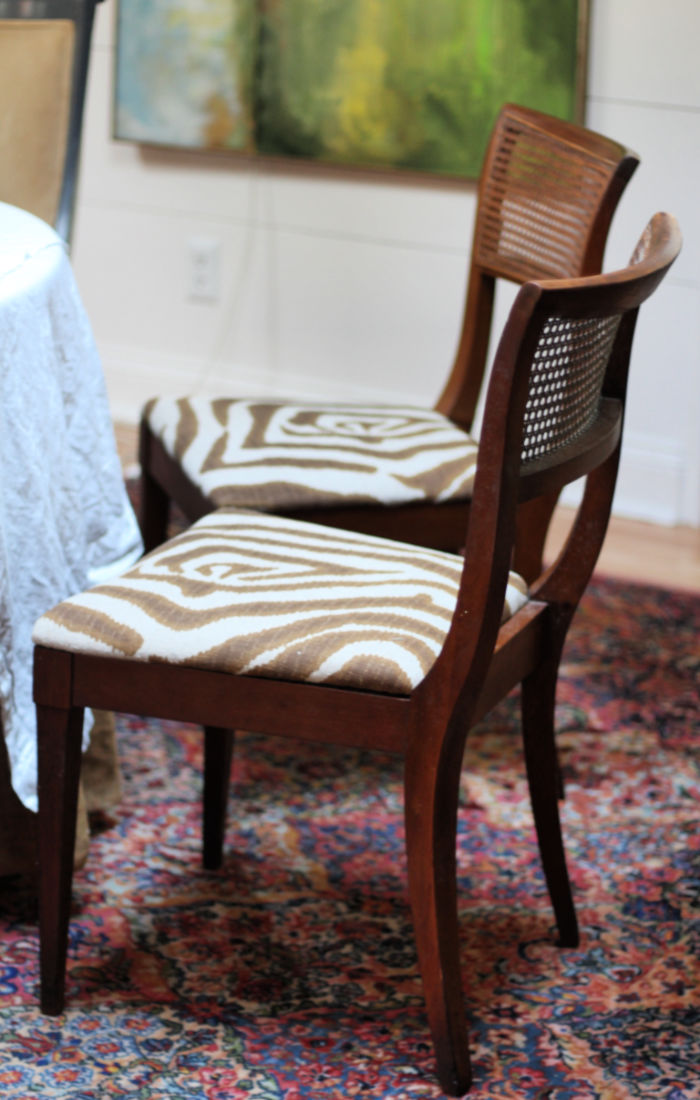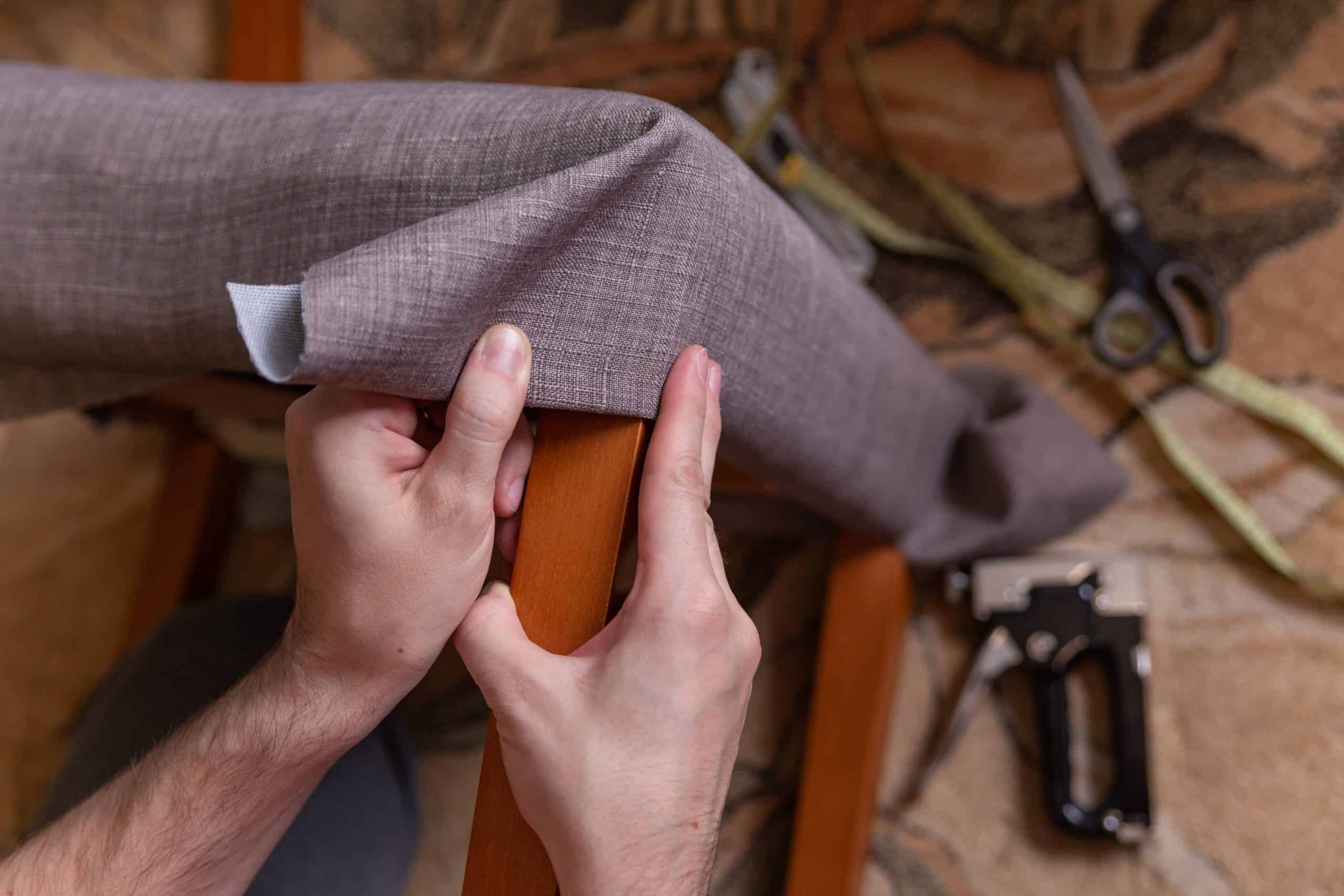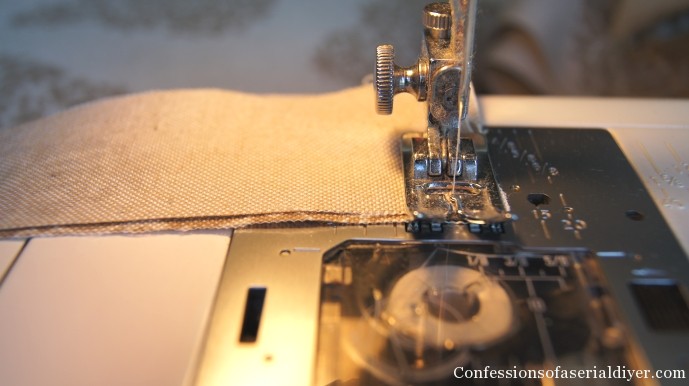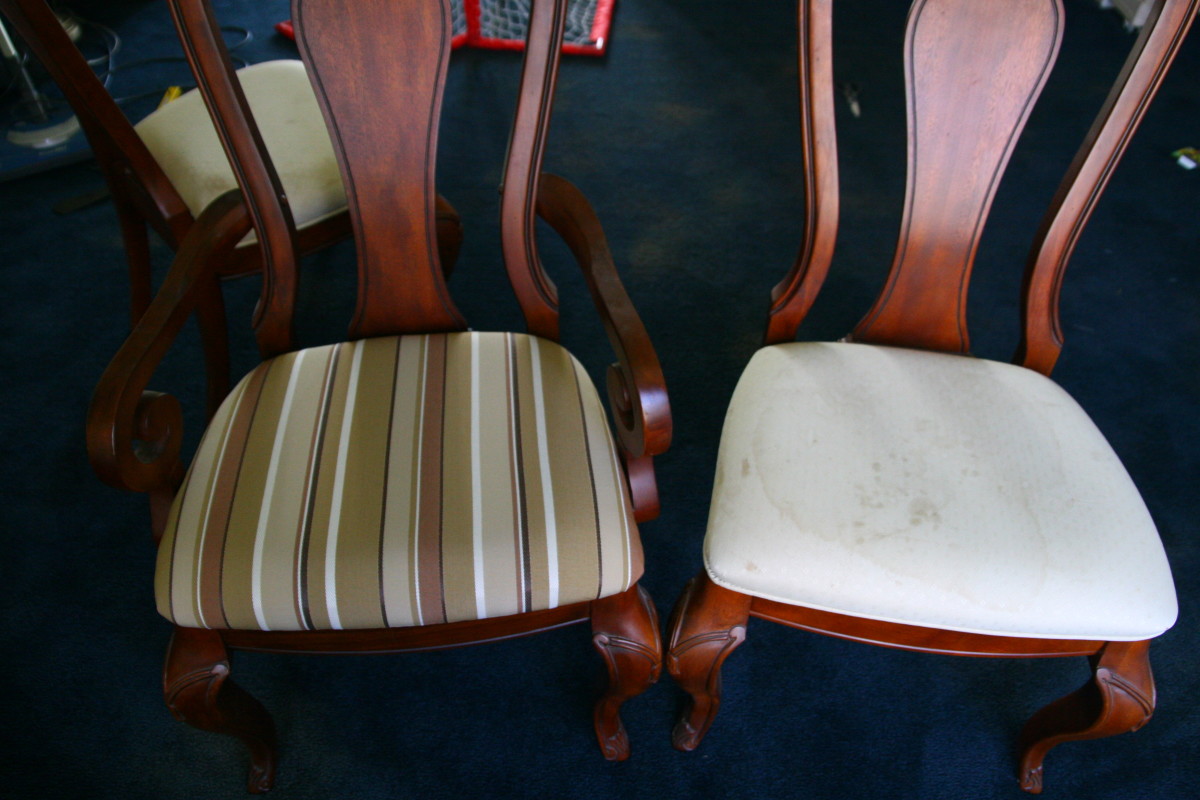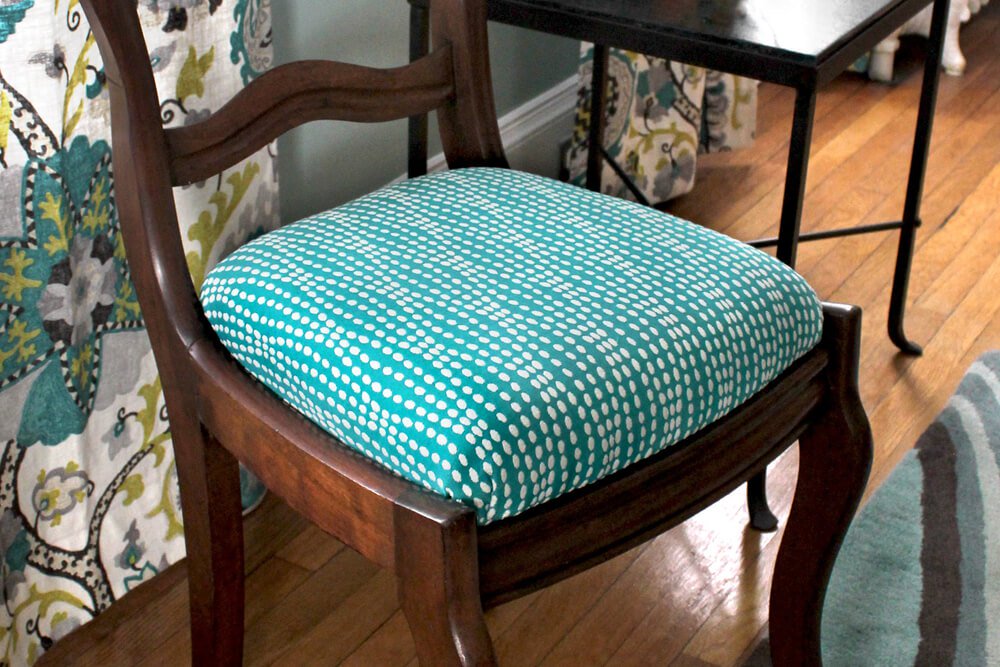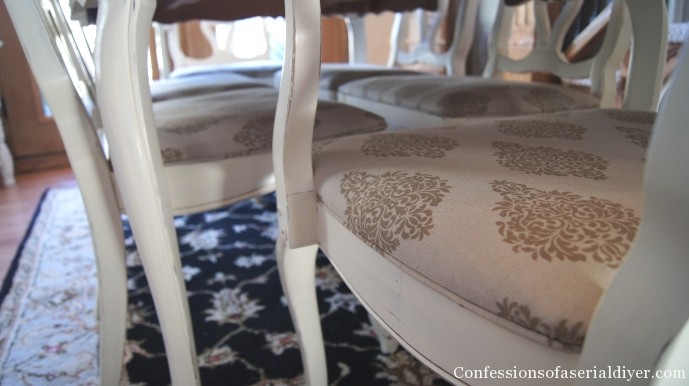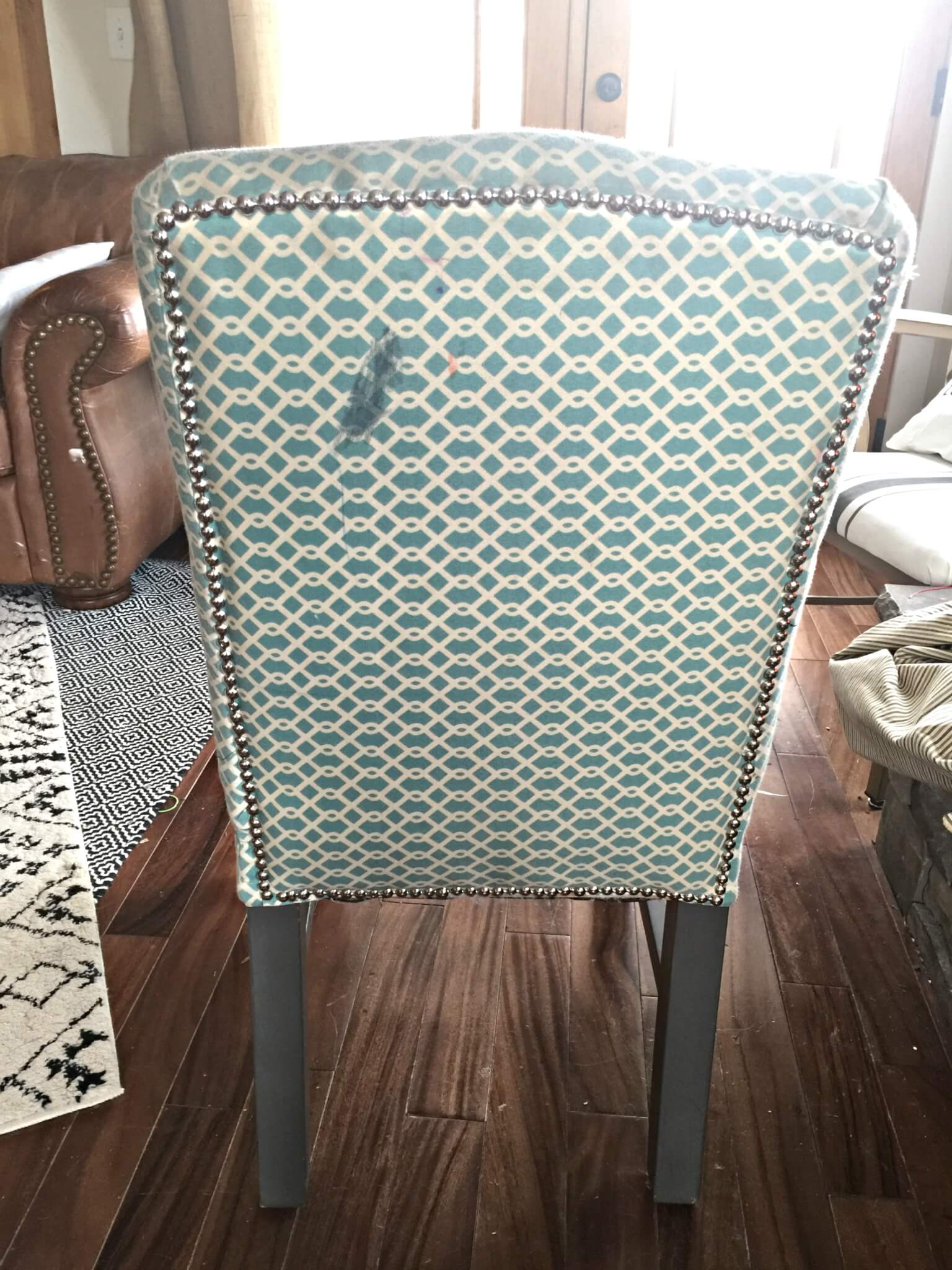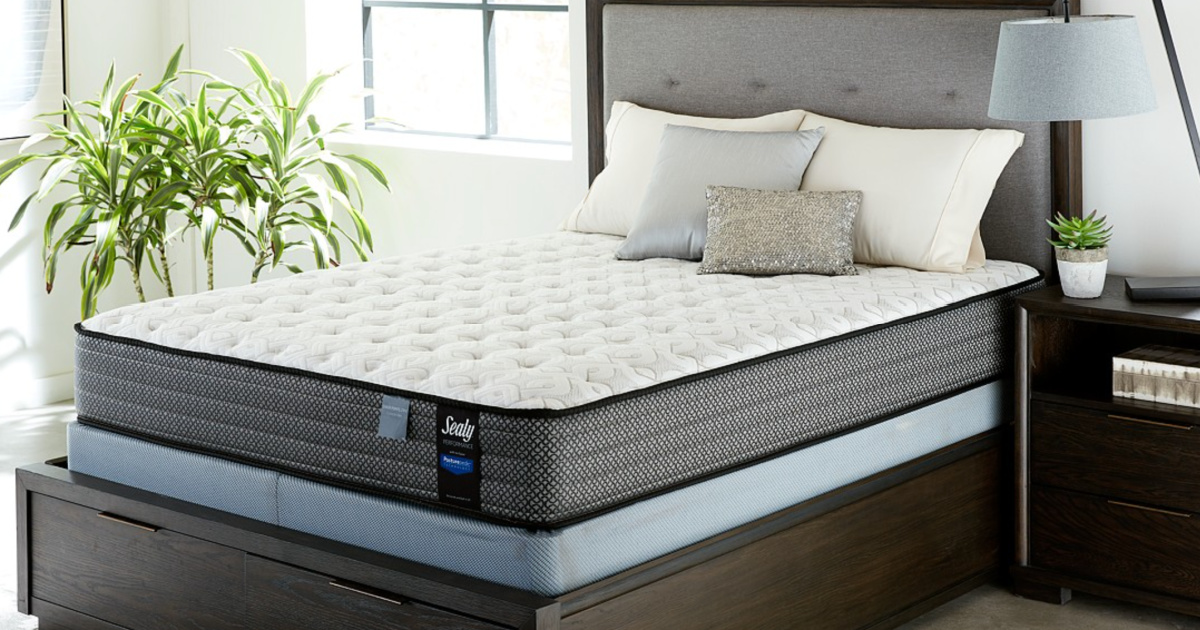Are your dining room chairs starting to look worn and outdated? Instead of splurging on new chairs, why not give them a fresh new look with some piping? Reupholstering dining room chairs with piping is a great way to add a touch of elegance and style to your dining room without breaking the bank. Follow our step-by-step guide to learn how to transform your dining room chairs into statement pieces with the simple addition of piping.Reupholster Dining Room Chair With Piping
Before you begin, gather all necessary materials including fabric, piping, scissors, a sewing machine, and a staple gun. Choose a fabric that is durable and easy to work with, such as cotton or linen. You can also use a contrasting fabric for the piping to add a pop of color to your chairs. Start by removing the old fabric from your dining room chairs. Use a flathead screwdriver to remove any staples or tacks. Once the fabric is removed, inspect the chair for any damages and make any necessary repairs before moving on to the next step. Next, measure and cut your fabric to fit the chair seat. Be sure to add a few inches on each side to allow for wrapping and stapling. Place the fabric on the seat and smooth out any wrinkles or creases. Use the staple gun to secure the fabric to the underside of the chair seat, pulling tightly as you staple. Now it's time to add the piping. Cut strips of fabric on the bias (diagonally) and fold them over the piping cord. Use a zipper foot on your sewing machine to sew the fabric around the cord, creating the piping. Once all the piping is made, use a hot glue gun to secure it around the edges of the chair seat, covering the staples. Reattach the seat to the chair frame and admire your newly reupholstered dining room chair with piping!How to Reupholster a Dining Room Chair with Piping
Reupholstering your dining room chairs with piping can seem like a daunting task, but with a little DIY know-how, it can be a fun and rewarding project. Not only will it save you money, but you'll also have unique and personalized chairs that reflect your style. Start by choosing a fabric that fits your style and personality. Consider colors, patterns, and textures that will complement your dining room decor. Don't be afraid to mix and match fabrics for a unique look. When adding the piping, be sure to take your time and make neat and even stitches. You can also use a fabric glue to secure the piping instead of sewing if you prefer. Remember to pull the fabric tight and smooth out any wrinkles as you staple it to the seat. Don't forget to add a protective finish to your chairs, such as a clear sealant, to ensure the fabric and piping stay in place and are easy to clean.DIY Reupholstered Dining Room Chairs with Piping
For a more detailed guide on how to reupholster your dining room chairs with piping, follow these simple steps: Step 1: Remove the old fabric from the chair seat using a flathead screwdriver. Step 2: Measure and cut your new fabric to fit the chair seat, leaving a few inches on each side for wrapping and stapling. Step 3: Use a staple gun to attach the fabric to the underside of the chair seat, pulling tightly as you staple. Step 4: Cut strips of fabric on the bias and fold them over the piping cord. Use a zipper foot on your sewing machine to sew the fabric around the cord, creating the piping. Step 5: Use a hot glue gun to secure the piping around the edges of the chair seat, covering the staples. Step 6: Reattach the seat to the chair frame and add a protective finish to the fabric and piping.Step-by-Step Guide to Reupholstering Dining Room Chairs with Piping
Reupholstering dining room chairs with piping may seem like a daunting task, but with these helpful tips, you'll have professional-looking chairs in no time. Tip 1: Use a contrasting fabric for the piping to add a pop of color to your chairs. Tip 2: If you're using a patterned fabric, be sure to align the pattern on each chair for a cohesive look. Tip 3: Use a zipper foot on your sewing machine to make neat and even stitches when creating the piping. Tip 4: Don't be afraid to mix and match fabrics for a unique and personalized look. Tip 5: Add a protective finish to your chairs to ensure the fabric and piping stay in place and are easy to clean.Reupholstering Dining Room Chairs with Piping: Tips and Tricks
When choosing a fabric for your dining room chairs, it's important to consider durability, ease of use, and style. Some of the best fabrics for reupholstering dining room chairs with piping include: 1. Cotton: This fabric is durable, easy to work with, and comes in a wide variety of colors and patterns. 2. Linen: Linen is another durable fabric that is perfect for adding a touch of elegance to your dining room chairs. 3. Velvet: Velvet is a luxurious and stylish option for reupholstering dining room chairs with piping. 4. Faux Leather: For a more modern and sleek look, consider using faux leather for your chairs. 5. Outdoor Fabric: If you have young children or pets, outdoor fabric is a great option for its durability and easy cleaning.Best Fabrics for Reupholstering Dining Room Chairs with Piping
If you're still unsure about reupholstering your dining room chairs with piping, take a look at some before and after photos for inspiration. You'll be amazed at the transformation and how much a simple addition of piping can elevate the look of your chairs.Reupholstering Dining Room Chairs with Piping: Before and After
If you already have dining room chairs that are in good condition, but you want to add some piping for a bit of extra flair, follow these simple steps: Step 1: Measure the length and width of your chair seat and cut fabric strips on the bias accordingly. Step 2: Fold the fabric strips over the piping cord and sew the edges together using a zipper foot on your sewing machine. Step 3: Use a hot glue gun to secure the piping around the edges of the chair seat, covering the staples. Step 4: Let the glue dry completely before using the chair.How to Add Piping to a Dining Room Chair
The cost and time for reupholstering dining room chairs with piping will vary depending on the number of chairs and the materials you use. However, on average, it can cost between $30-$50 per chair and take 2-3 hours per chair. This is significantly less expensive than buying new chairs and can be a fun and rewarding DIY project.Reupholstering Dining Room Chairs with Piping: Cost and Time Breakdown
When reupholstering your dining room chairs with piping, there are a few common mistakes to avoid to ensure a professional and polished look: Mistake 1: Not pulling the fabric tight enough when stapling, resulting in a wrinkled and loose appearance. Mistake 2: Not aligning the pattern on each chair, resulting in a mismatched and messy look. Mistake 3: Using the wrong type of fabric, resulting in a less durable and less visually appealing finish. Mistake 4: Not adding a protective finish, resulting in easy wear and tear on the fabric and piping. With these tips and tricks in mind, you can easily transform your dining room chairs with the simple addition of piping. Don't be afraid to get creative and make your chairs truly one-of-a-kind. Happy reupholstering!Reupholstering Dining Room Chairs with Piping: Common Mistakes to Avoid
The Impact of Reupholstering Dining Room Chairs on House Design

Why Reupholstering Dining Room Chairs Can Transform Your Home
 When it comes to designing a home, the little details can make all the difference.
Reupholstering dining room chairs with piping
is a simple and budget-friendly way to give your space a whole new look.
Dining room chairs
are not just functional pieces of furniture; they also add to the overall aesthetic of the room. With the right fabric and design, you can elevate the style of your dining room and make it a space that you and your guests will love.
When it comes to designing a home, the little details can make all the difference.
Reupholstering dining room chairs with piping
is a simple and budget-friendly way to give your space a whole new look.
Dining room chairs
are not just functional pieces of furniture; they also add to the overall aesthetic of the room. With the right fabric and design, you can elevate the style of your dining room and make it a space that you and your guests will love.
The Benefits of Piping in Dining Room Chairs
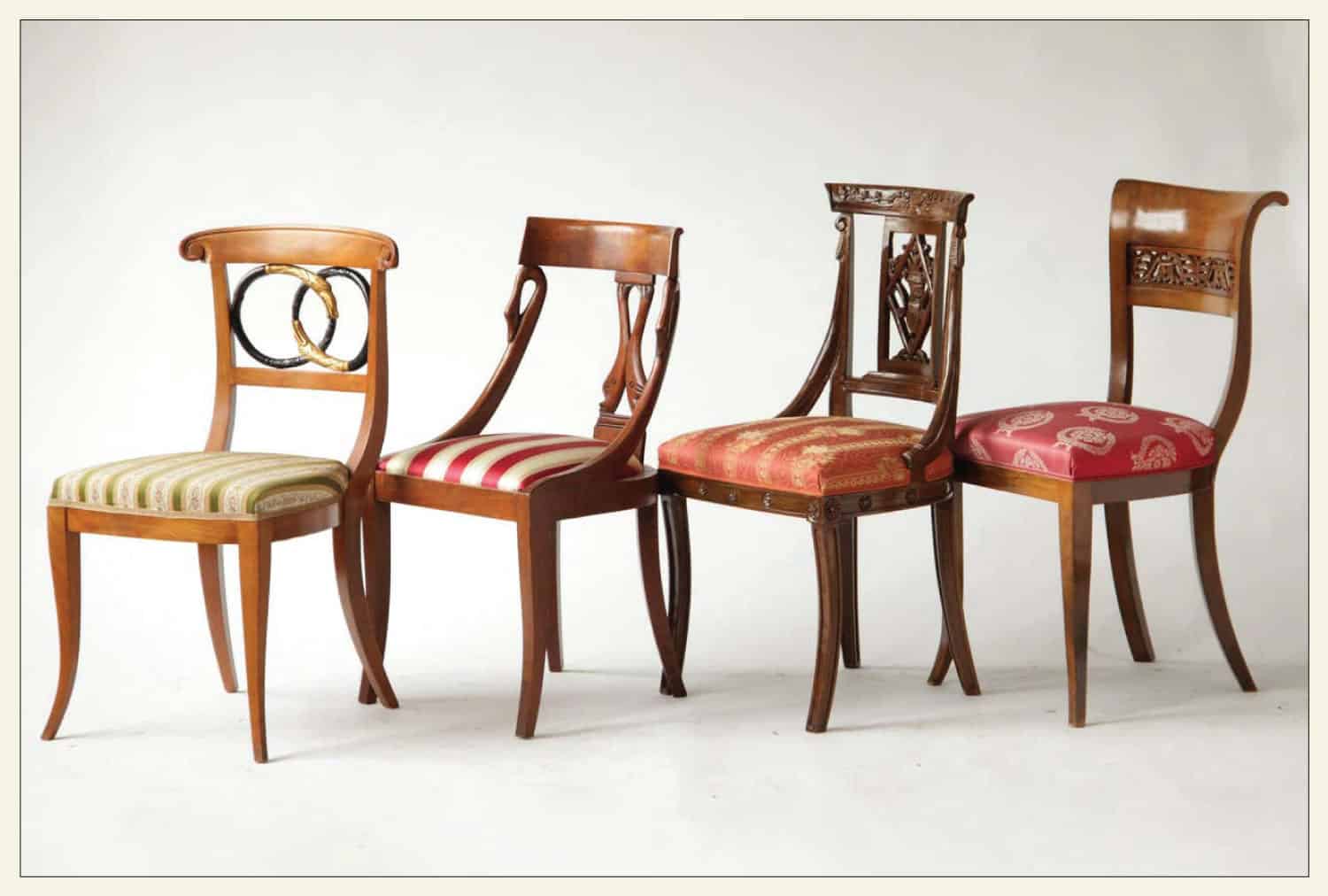 Piping, also known as welting, is a decorative trim that adds a finished and polished look to furniture. It is a small detail, but it can have a big impact on the overall design of your dining room.
Piping
can be made from a variety of materials such as fabric, leather, or even rope, and it can be customized to match or contrast with the fabric of your chairs. Not only does it add a touch of elegance and sophistication, but it also helps to define the shape and structure of the chair.
Piping, also known as welting, is a decorative trim that adds a finished and polished look to furniture. It is a small detail, but it can have a big impact on the overall design of your dining room.
Piping
can be made from a variety of materials such as fabric, leather, or even rope, and it can be customized to match or contrast with the fabric of your chairs. Not only does it add a touch of elegance and sophistication, but it also helps to define the shape and structure of the chair.
Choosing the Right Fabric for Your Reupholstered Dining Room Chairs
 When it comes to
reupholstering dining room chairs with piping
, the fabric you choose is crucial. It should not only complement the overall design of your dining room, but it should also be durable and easy to clean. For a classic and timeless look, consider using
neutral-colored fabrics
such as linen, cotton, or velvet. These materials are not only versatile but also easy to maintain. However, if you want to make a bold statement, you can opt for
bright and vibrant colors
or
bold patterns
to add a pop of personality to your dining room.
When it comes to
reupholstering dining room chairs with piping
, the fabric you choose is crucial. It should not only complement the overall design of your dining room, but it should also be durable and easy to clean. For a classic and timeless look, consider using
neutral-colored fabrics
such as linen, cotton, or velvet. These materials are not only versatile but also easy to maintain. However, if you want to make a bold statement, you can opt for
bright and vibrant colors
or
bold patterns
to add a pop of personality to your dining room.
The Process of Reupholstering Dining Room Chairs with Piping
 If you are feeling adventurous and want to take on
reupholstering your dining room chairs
as a DIY project, there are plenty of tutorials and guides available online. However, if you want a professional and polished finish, it is best to hire a skilled upholsterer. They will be able to guide you in choosing the right fabric and piping for your chairs and ensure that the end result is of high quality.
If you are feeling adventurous and want to take on
reupholstering your dining room chairs
as a DIY project, there are plenty of tutorials and guides available online. However, if you want a professional and polished finish, it is best to hire a skilled upholsterer. They will be able to guide you in choosing the right fabric and piping for your chairs and ensure that the end result is of high quality.
The Cost-Effectiveness of Reupholstering Dining Room Chairs
 Reupholstering dining room chairs with piping is not only a budget-friendly way to update your home's design, but it is also a sustainable option. Instead of buying new furniture, you can give your existing chairs a new lease on life, reducing waste and saving money. Additionally, reupholstering allows you to customize the design and fabric of your chairs, ensuring that they fit perfectly with your home's style.
In conclusion,
reupholstering dining room chairs with piping
is a simple yet effective way to transform your home's design. It adds a touch of elegance, allows for customization, and is a budget-friendly and sustainable option. So why not give your dining room a fresh new look and elevate the overall aesthetic of your home with this easy and stylish update?
Reupholstering dining room chairs with piping is not only a budget-friendly way to update your home's design, but it is also a sustainable option. Instead of buying new furniture, you can give your existing chairs a new lease on life, reducing waste and saving money. Additionally, reupholstering allows you to customize the design and fabric of your chairs, ensuring that they fit perfectly with your home's style.
In conclusion,
reupholstering dining room chairs with piping
is a simple yet effective way to transform your home's design. It adds a touch of elegance, allows for customization, and is a budget-friendly and sustainable option. So why not give your dining room a fresh new look and elevate the overall aesthetic of your home with this easy and stylish update?




































